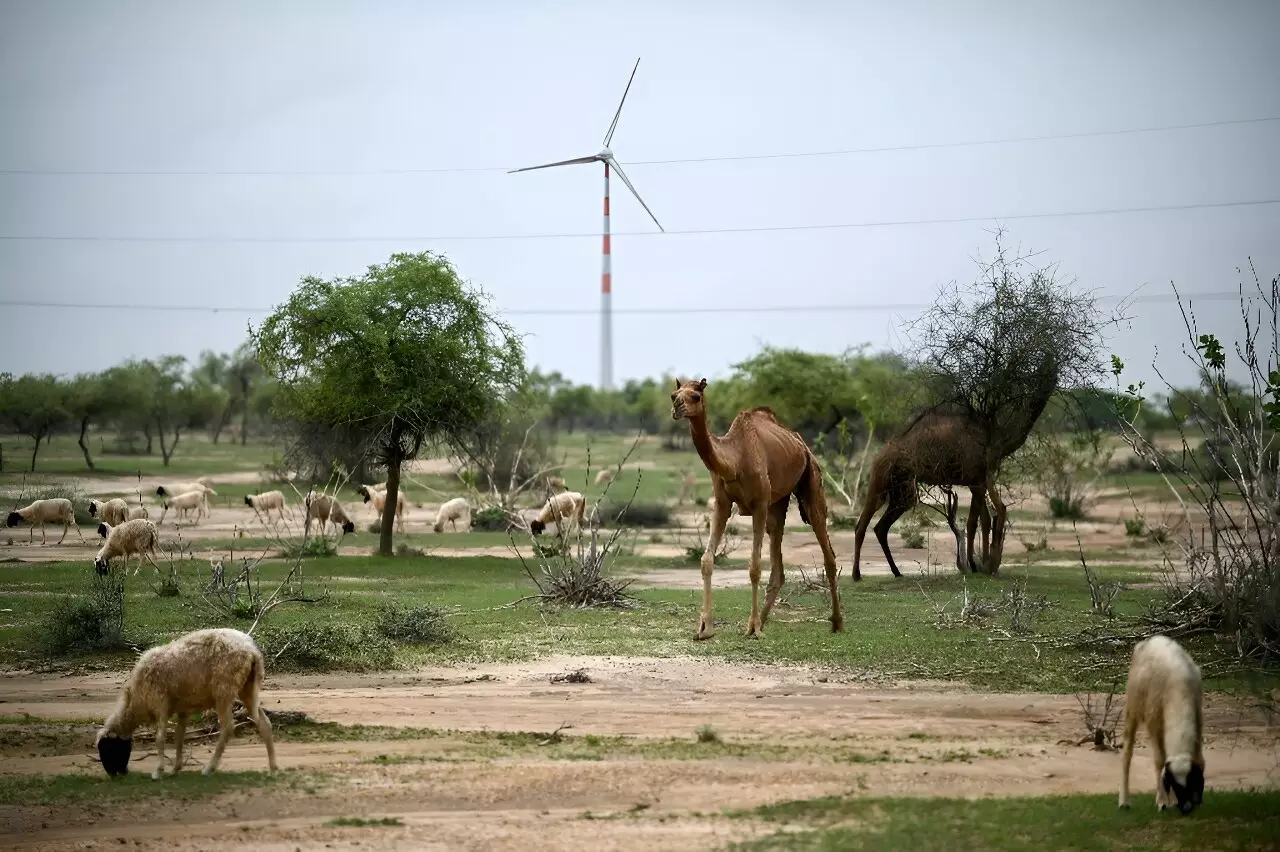Renewable energy has emerged as a vital solution to combat climate change and establish more sustainable economies worldwide. In India, particularly in the Thar Desert of Rajasthan, large-scale wind turbine farms are contributing to the country’s aspirations of increasing its non-fossil fuel energy generation. However, this transition to green energy has unraveled complex issues for local communities who are often left grappling with negative consequences that question the equity of such advancements.
Local herders like Nena Ram epitomize the human cost of a renewable energy revolution that does not take into account the traditional livelihoods of those living in close proximity to developing power installations. For centuries, the inhabitants of the Thar Desert have survived through an intricate system of grazing and livestock farming that depends heavily on the availability of communal land and resources. The onslaught of industrial turbines brings not only large physical structures but also a shift in land usage policies that prioritize corporate energy production over community needs.
As Ram articulated, these wind farms did not benefit him or his fellow herders; instead, they symbolize an encroachment into territories that have sustained communities for generations. Farmers and livestock owners are left without adequate grazing areas while losing access to vital water sources. The loss and degradation of orans—sacred groves integral to the local ecosystem—indicate a grim trade-off; in the name of sustainability, the very essence of rural life is jeopardized.
While firms such as Adani and Suzlon promote their roles in supporting India’s renewable energy goals, claims of community support ring hollow to residents facing direct repercussions. The promise of sustainable development, like educational initiatives and health projects, may exist, yet these measures cannot compensate for the immediate loss of land that local farmers depend upon for their livelihood. As Jitendra Kumar, a health worker in the area, noted, the consequences of land seizures have translated into severe declines in milk production and other agricultural yield.
Moreover, the electricity generated from these wind farms hums away into larger urban areas, leaving local residents in the dark. The contradictions of a nation transitioning to green energy while still battling notorious power cuts create a bewildering paradox. Even amidst a energy crisis, the objective of achieving a 500 GW non-fossil fuel power capacity by 2030 appears to prioritize slick statistics over grassroots realities.
Though revered as barren landscapes, the Thar Desert harbors a treasure trove of biodiversity that is often overlooked by external entities focusing solely on energy generation. The introduction of wind turbines and high-voltage power lines threaten populations of local wildlife, including the critically endangered Great Indian Bustard. The decline in their numbers casts an ominous shadow over efforts to promote renewable energy.
The environmentalist Parth Jagani highlighted that incidents involving the birds flying into power lines are not mere inconveniences, but rather signs of a larger, more alarming disturbance in the ecosystem. The Supreme Court’s initial recommendation to place power lines underground in vital bird habitats provides a glimmer of hope, yet that decision being overturned speaks to the struggle between ecological preservation and aggressive energy policies.
As India continues on its trajectory of renewable energy expansion, addressing the disparities faced by local communities must become a priority. It is crucial that energy policies are not implemented in vacuum but rather consider the voices of the very people whose lives they affect. Engaging with local stakeholders to develop sustainable frameworks could result in not only a more equitable transition to renewable energy but also a brewing of social cohesion in an otherwise fractured landscape.
Community engagement and support systems tailored to the realities of rural life must be woven into the nation’s renewable energy strategy to ensure that sustainability is not a mere slogan. Facilitating a dialogue between corporate interests, government bodies, and local residents can pave the way for innovative solutions that harmoniously balance energy production and ecological integrity.
In understanding the consequences of this dual-edged sword of renewable energy, it becomes evident that achieving climate goals should not come at the cost of displacing vulnerable populations. A path forward hinges on fostering a sense of shared ownership and responsibility, ensuring that the drive for green energy also cultivates respect for the land and the lives intertwined with it.

